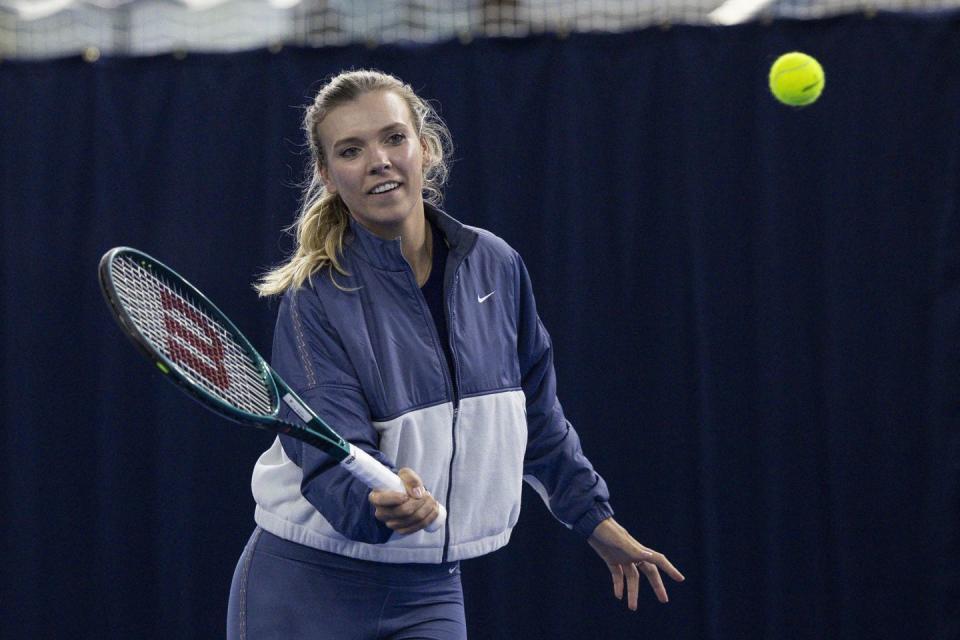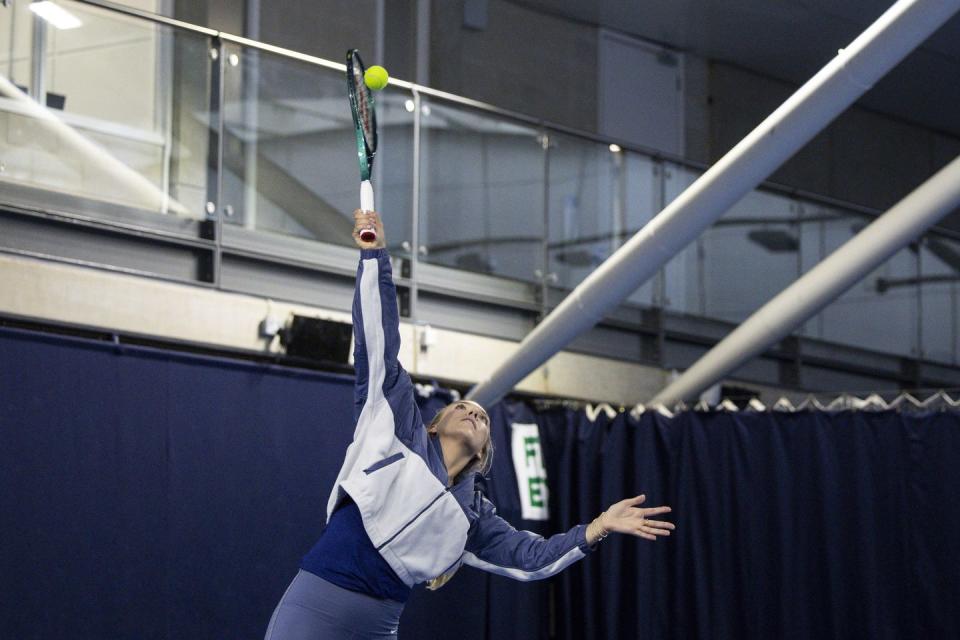6 things tennis star Katie Boulter swears by – plus, her top tips for beginners
Katie Boulter. Current British No 1 in women’s singles. Ranked No. 27 in the World. And although she’s yet to advance beyond the third round at Wimbledon, this summer, all eyes are on the 27-year-old from Leicestershire to see if she can build on her success from San Diego and use the support from her home crowd to make a breakthrough at Wimbledon.
We caught up with Katie earlier this year at the National Tennis Centre, in Roehampton, to find out how she trains, fuels and rests for success – and her top tips for beginner tennis players....
6 ways Katie Boulter supercharges her athletic performance
1. Cross-training is key
Of course, I do a lot of training on the court – which is very specific to the sport, but I also do a lot of different types of training off the court – including in the gym and running.
I’m in the gym every day. If it’s a recovery day, I’ll still spend an hour on the bike – and if it’s a full training day, I’ll be in the gym two or three times.
I do a lot of weightlifting, harness work on the court and medicine ball work. It’s important to maintain as much plyos (plyometrics) as I can because tennis is an explosive sport.
But cross-training is also about injury prevention. With tennis, there are so many moving parts; different conditions and different balls – you have to adapt to on a daily basis. So it’s important to look after your body, else you’ll be struggling later on in the season.

2. Fuel for performance
I spend a lot of time with my nutritionist, where there’s a big emphasis on getting as many calories in as possible. Obviously, I burn a lot of cals – especially on match days – so getting enough carbs in is very important for me. Nutrition is a little bit like a car, if you don’t have petrol, you’re not going to run very well. So, I just focus on getting as many carbs as possible, to make sure that I’m fueling my body.
3. Supplement where necessary
I take vitamin D – it’s been a staple for me for a very long time, as I’ve had a few bone issues. Back in the day, I had a few stress fractures so, naturally for me, that’s something that I make sure I take.
Depending on how my body feels, I tend to use collagen – specifically for tendons. But I try to get everything through nutrition.
4. Recovery is essential
I've tried to get into a little routine of using ice baths. But I’m a huge advocate of recovery pumps – which, for those who don’t know, are basically leg compression-type body boots. I sometimes use them before matches as well as after matches – just to stay fresh and to feel good. I think they have a big impact mentally as well.
5. Collate a strong team around you
Some days you have bad days, some days you have good days, but if you keep putting the work in, eventually it’s going to show and I do genuinely believe that. I think the current training environment that I have with my team, my boyfriend and his team, is awesome – because we’re all very positive people and you pick each other up. I think we just understand each other, in a way that’s very comfortable, and we know how to help one another.
My team are awesome – they’ve got such great minds and I try and emulate them a lot of the time – I do think that my recent success has come from that. It’s about having positive role models – I’ve just been very lucky with the people I have around me.
6. Get in the zone pre-match
In tennis you’re constantly learning how to adapt – you adapt to courts, you adapt to surroundings, you adapt to temperature changes and whoever does that the best is the one that wins the tournament.
I do try to keep some things as consistent as possible, though. I might be in a tournament in, say, America, but I still like to drive my Lexus by myself to the game. It’s just little things, I might have chicken and pasta every night, for example. I’m a very plain eater, but I’m a creature of habit and I do like a routine.
I also have this piece of glass that says ‘a little piece of luck’ on it, which my grandpa gave to me when I was younger – that’s the one thing I keep with me, in my tennis bag.

Katie’s top tips for beginners
1. Practice makes perfect
Like anything, improving your tennis skills takes time. The more you enjoy doing something, the more you want to do it right.
2. Join a group session
Group sessions are awesome – being with other people makes tennis more of a social thing – you just lose track of time and before you know it, you’ve been on the court for two hours and you’ve got two hours of practising in.
3. Learn how to hold a tennis racket properly
It might seem simple but for an ‘optimum chance’ of hitting the tennis ball (using your forehand) – you want to hold tight with a ‘semi-western’ grip. This is also known as the frying pan grip or the pancake grip – and it’s one of the most popular grips out there. You place the palm side of your index finger’s knuckle against the fourth bevel if you’re right-handed, or the sixth bevel if you are left-handed.
Katie is a brand ambassador for Lexus. Katie drives a Lexus RZ 450e battery-electric SUV.
Cut through the noise and get practical, expert advice, home workouts, easy nutrition and more direct to your inbox. Sign up to the WOMEN'S HEALTH NEWSLETTER
More on tennis
These are the best tennis holidays for improving your volley
14 best tennis skirts to shop for wearing on and off the court
Up your game with one of the best tennis rackets in 2024
You Might Also Like


